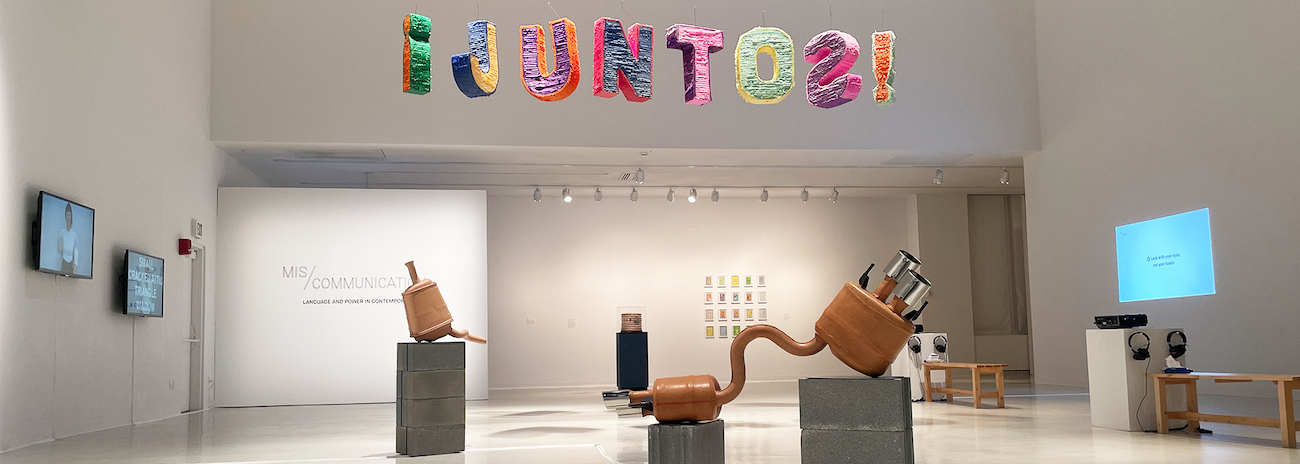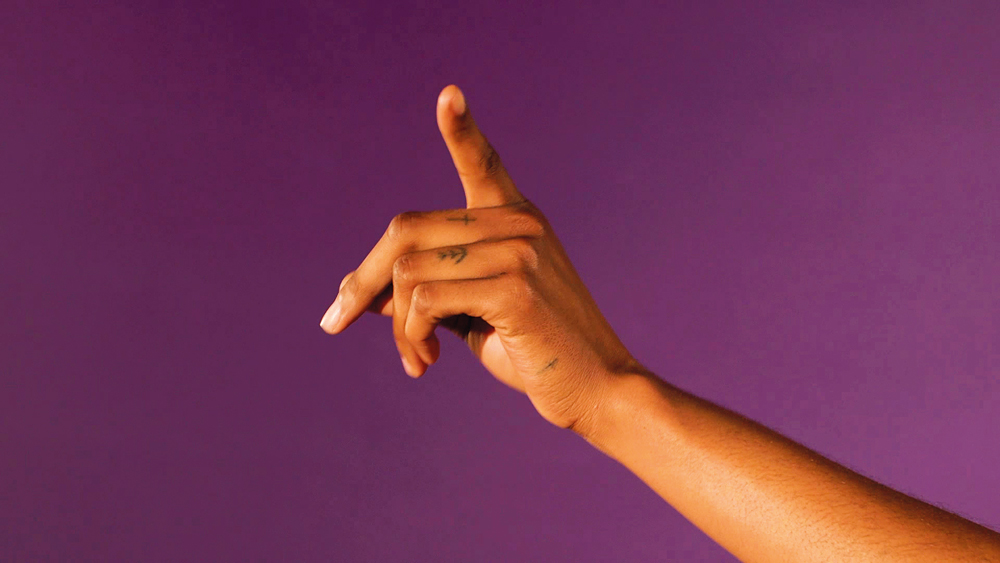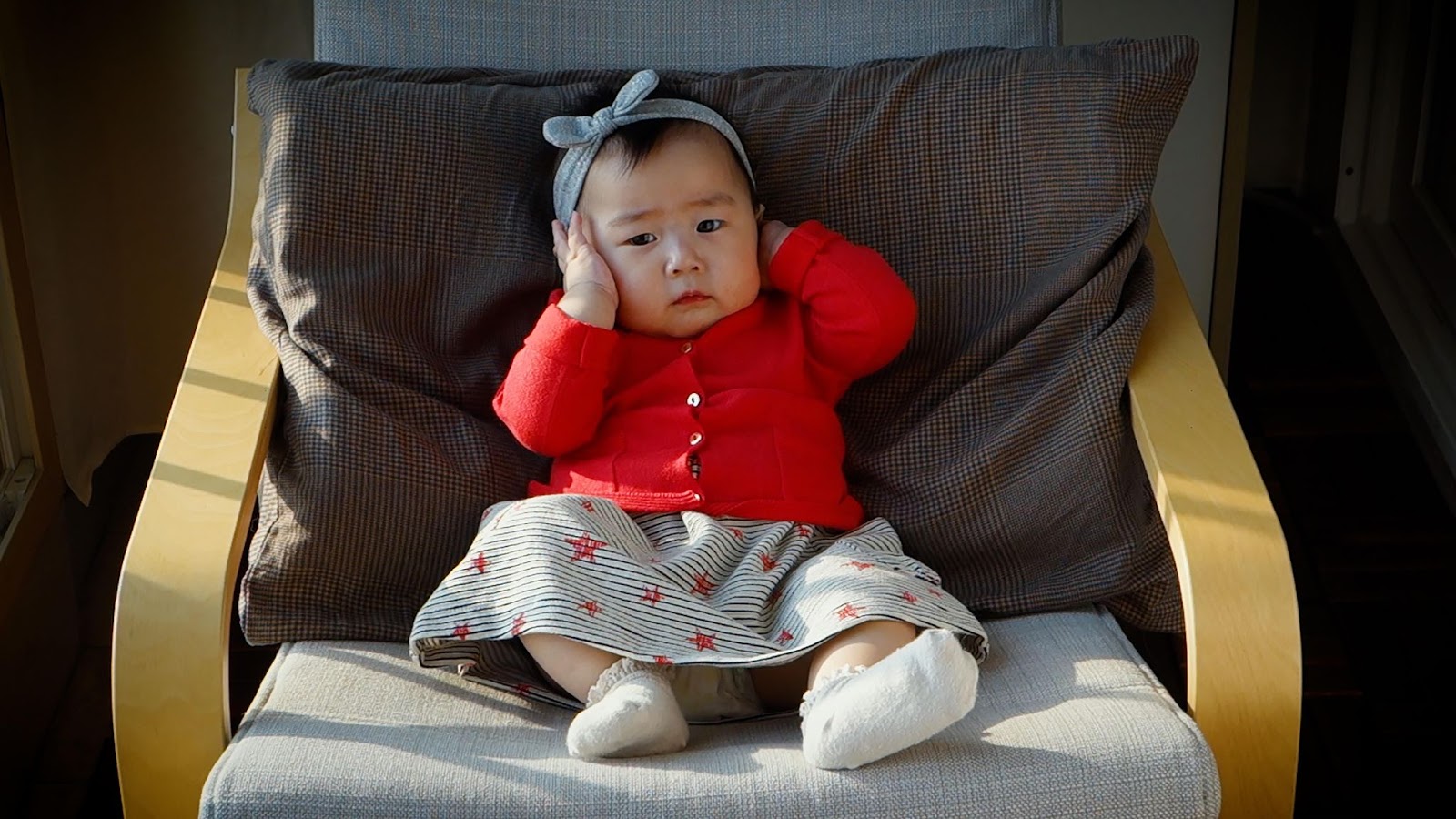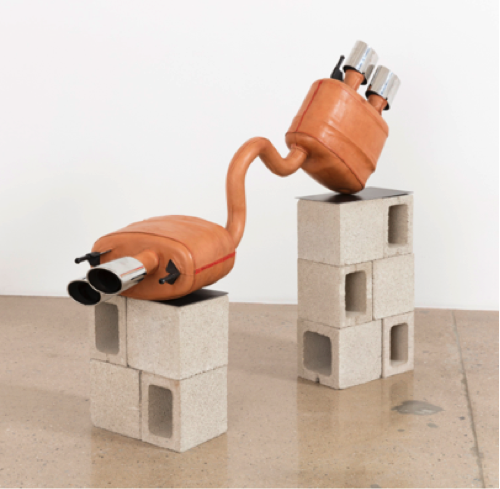Mis/Communication: Language and Power in Contemporary Art
November 11, 2021 - March 12, 2022

Gallery Hours: Monday-Friday 12-4pm and evenings of most Staller Center events. Also open by appointment.
To schedule an appointment, emailZuccaireGallery@stonybrook.edu
EVENTS:
Opening Event: Thursday, November 11, 2021, 5-7pm
Performance by Benjamin Lundberg Torres Sánchez, 5pm
Art & Linguistics Panel: Wednesday, March 9, 2022, 4:30 PM
What is the relationship between language, power, politics, and artistic practice?
Join us for a panel conversation with Dulce Soledad Ibarra and Jisoo Chung, participating
artists in Mis/Communication: Language and Power in Contemporary Art, alongside Grace Wivell, PhD student in Linguistics, Stony Brook University. The
panelists will describe their artistic and research practices and engage in a casual
conversation related to these themes. Each panelist assigned a recommended corresponding
reading, and the event will include time for audience Q&A and discussion. This panel
is organized in conjunction with Mis/Communication: Language and Power in Contemporary
Art, on view in the Zuccaire Gallery through 3/12, with support from the Department
of Art and the Graduate Student Organization.
Readings here: https://tinyurl.com/art-linguistics-panel-readings
Featured Artists: Jesse Chun | Martine Syms | Dahn Gim | Christine Sun Kim and Thomas Mader | Clarissa Tossin | Frédéric Bruly Bouabré | Han Yohan | Angelina Joshua and Jake Duczynski | Kim Schoen | Jisoo Chung | Shan Goshorn | Dulce Soledad Ibarra | Benjamin Lundberg Torres Sánchez

Mis/Communication: Language and Power in Contemporary Art features video, sculpture, drawing, performance, and interactive media artworks by fifteen contemporary artists who explore the power of language in a cultural context.
It is through language that we can connect with one another, but how is this connection also affected by the power dynamics inherent in language? Artwork by mostly young and emerging artists examines issues such as the global predominance of English, the colonial violence of European languages in the global south, and the societal tendency to censure other languages, dialects and linguistic practices.
The exhibition considers spoken and written language as defined by national or cultural linguistic traditions like Korean, Spanish, and Portuguese and indigenous languages like Bété, Cherokee, and Marra, but also American Sign Language, performative body language, “academic speak,” and Artificial Intelligence’s voice recognition program.
Han Yohan’s Phallo Me(美) addresses the underlying power dynamics of English as a Second Language (ESL) programs in the United States and abroad. Assimilation as represented through language is further explored in a few series: Dahn Gim’s Names I Had You Call Me speaks to an acquiescent concession to the dominant language through self-naming, while works by Frédéric Bruly Bouabré,Shan Goshorn, Angelina Joshua, and Jake Duczynski point to a more violent, colonial history of the erasure of indigenous languages in the Côte d’Ivoire, the United States, and Australia. Clarissa Tossin’s Vogais Portuguesas/Portuguese Vowels, a series of sugar sculptures molded from the interior of the artist’s mouth, and Benjamin Lundberg Torres Sánchez’s performance A Lengua for Mi Boca speak to the forced language assimilation of the indigenous populations in South America. Dulce Soledad Ibarra’s 9th to Olympic [JUNTOS] interrogates the colonial history of the piñata while uncovering its collective resonance for the Mexican diaspora in Los Angeles. In score for unlanguaging, Jesse Chun misuses English letter stencils transforming the text into glyph-like abstractions. Christine Sun Kim and Thomas Mader’s tables and windows challenges the privileging of the spoken word. Kim Schoen’s The Horseshoe Effect and Martine Syms’s Notes on Gesture point to the types of speech and gesture that are required for professional and scholarly success. In Jisoo Chung’s video work Museum Manners for Siri, the artist narrates into her iPhone—using an accented English, her second language—while Siri transcribes these dictations in comical and mystifying ways on account of its programmed pronunciation biases.

Curated by Amy Kahng, a Stony Brook PhD student in art history, the exhibition is the 2020 winner of the SUNY Prize for Performance, Creation and Curation. Funds are provided by the State University of New York. Traveling exhibition schedule: Stony Brook University, Paul W. Zuccaire Gallery (originating institution), November 11, 2021 - March 12, 2022; SUNY Polytechnic, Gannett Gallery, September 1, 2022 - October 14, 2022; SUNY Fredonia, Marion Gallery, February 28 - April 16, 2023; SUNY Adirondack, Visual Arts Gallery, September 6 - Nov 2, 2023; SUNY New Paltz, Dorsky Museum, June-November 2024.

Image captions:
Martine Syms, Notes on Gesture (video still), 2014
Han Yohan, Phallo Me (美) (still), 2017, single-channel video, 7 minutes
Dahn Gim, Erin from Names I Had You Call Me series, 2018, leather covered muffler with sound
To read a review of Mis/Communication in HYPERALLERGIC, please click here:
Mis/Communication Highlights Artists Examining the Intersection of Language and Power
To read a review of Mis/Communication in Carla, please click here: CARLA (Contemporary Art Review Los Angeles): (L.A. in Long Island) Mis/Communication:
Language and Power in Contemporary Art at Paul W. Zuccaire Gallery [PDF]
The 2021-2022 Paul W. Zuccaire Gallery season is supported by a generous grant from the Paul W. Zuccaire Foundation. Additional support is provided by the Friends of the Staller Center.
